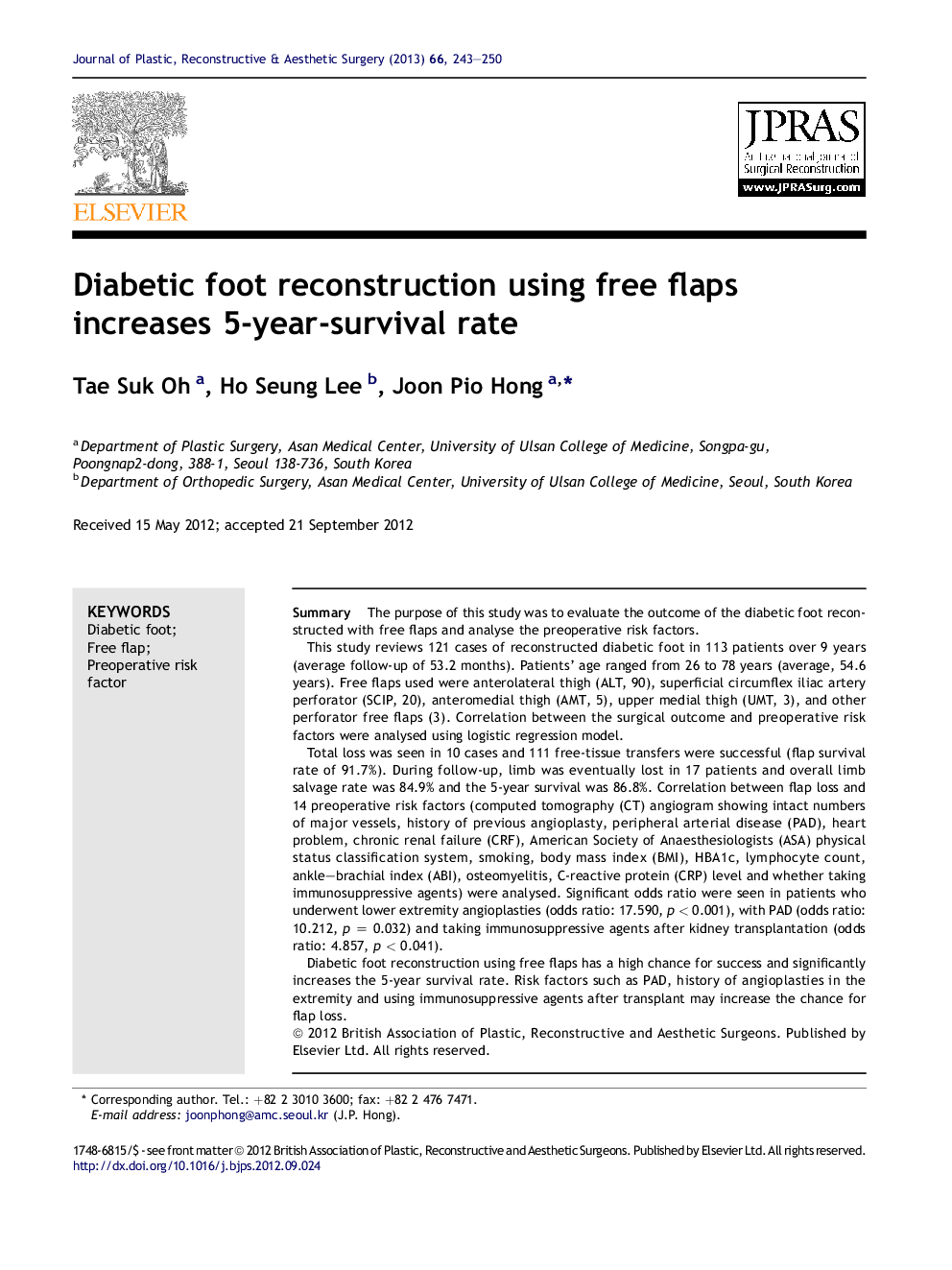| Article ID | Journal | Published Year | Pages | File Type |
|---|---|---|---|---|
| 4118766 | Journal of Plastic, Reconstructive & Aesthetic Surgery | 2013 | 8 Pages |
SummaryThe purpose of this study was to evaluate the outcome of the diabetic foot reconstructed with free flaps and analyse the preoperative risk factors.This study reviews 121 cases of reconstructed diabetic foot in 113 patients over 9 years (average follow-up of 53.2 months). Patients' age ranged from 26 to 78 years (average, 54.6 years). Free flaps used were anterolateral thigh (ALT, 90), superficial circumflex iliac artery perforator (SCIP, 20), anteromedial thigh (AMT, 5), upper medial thigh (UMT, 3), and other perforator free flaps (3). Correlation between the surgical outcome and preoperative risk factors were analysed using logistic regression model.Total loss was seen in 10 cases and 111 free-tissue transfers were successful (flap survival rate of 91.7%). During follow-up, limb was eventually lost in 17 patients and overall limb salvage rate was 84.9% and the 5-year survival was 86.8%. Correlation between flap loss and 14 preoperative risk factors (computed tomography (CT) angiogram showing intact numbers of major vessels, history of previous angioplasty, peripheral arterial disease (PAD), heart problem, chronic renal failure (CRF), American Society of Anaesthesiologists (ASA) physical status classification system, smoking, body mass index (BMI), HBA1c, lymphocyte count, ankle–brachial index (ABI), osteomyelitis, C-reactive protein (CRP) level and whether taking immunosuppressive agents) were analysed. Significant odds ratio were seen in patients who underwent lower extremity angioplasties (odds ratio: 17.590, p < 0.001), with PAD (odds ratio: 10.212, p = 0.032) and taking immunosuppressive agents after kidney transplantation (odds ratio: 4.857, p < 0.041).Diabetic foot reconstruction using free flaps has a high chance for success and significantly increases the 5-year survival rate. Risk factors such as PAD, history of angioplasties in the extremity and using immunosuppressive agents after transplant may increase the chance for flap loss.
